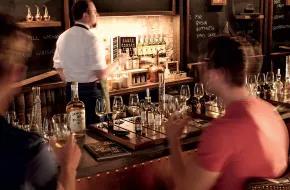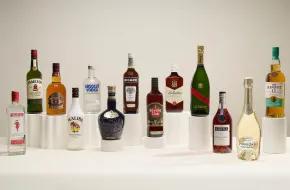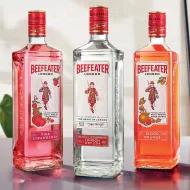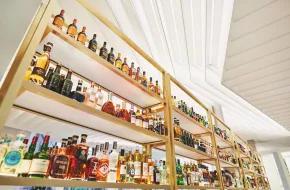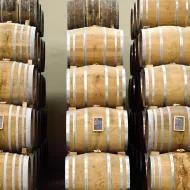Champagne is a prestigious and protected wine that is both globally recognized and rooted in centuries-old traditions. A symbol of elegance and sophistication, it pairs well with special occasions and celebrations. Each brand of champagne is produced from a unique blend and features a distinctive style of all its own.
Champagne is a prestigious and protected wine that is both globally recognized and rooted in centuries-old traditions. A symbol of elegance and sophistication, it pairs well with special occasions and celebrations. Each brand of champagne is produced from a unique blend and features a distinctive style of all its own.
Champagne: an exceptional wine
Champagne is a delimited winemaking region recognized by the Champagne Appellation d'Origine Contrôlée (AOC) label. Harsh climate conditions, the limestone subsoil and its location along natural slopes form the region's distinctive terroir, giving Champagne wines their unique character (discover the Champagne terroir).
Among major French wines, champagne is distinguished by the 7 unique principles of its production:
- Manual grape harvest
- Specific wine press
- Blending
- Second fermentation inside the bottle
- Riddling
- Disgorgement and dosage
- Minimum ageing period
Following the traditional Champagne method, each champagne house blends its wines from several grape varieties and different vintage years. This traditional process helps to improve wine quality and strike a balance.
Using his method, champagne is blended from 3 grape varieties:
- Pinot Noir, a red grape with clear juice that adds body and strength to the blend
- Pinot Meunier, a red grape with white juice that delivers notes of fruit
- Chardonnay, a white grape that lends finesse to the wine
Other categories of champagne use only one grape variety or grapes from a single year:
- A vintage champagne is composed exclusively of grapes from the same year, but can blend several grape varieties. It must be cellared for at least 3 years.
- The Blanc de Blancs, for instance, known as one of the most refined champagne varieties, is made exclusively from Chardonnay grapes.
Rosé champagne is produced by adding a regional red wine to classic champagne or by macerating the skin of Pinot Noir grapes during the winemaking process.
Champagne may also come in Brut, Sec, Demi-Sec and Doux varieties. To receive Brut appellation, the champagne must not exceed 15 grams of sugar per liter. For Sec status, the sugar dosage must fall between 17 and 35 grams per liter, or 33 to 50 grams per liter for Demi-Sec champagnes. Doux champagnes contain more than 50 grams of sugar per liter.
Champagne crus and grape varieties
Champagne terroirs are divided into 3 categories:
- Grand Cru,
- Premier Cru,
- Other Cru terroirs (cru or village).
This 'cru ranking' was officially established in 1911 by the representatives of Champagne producers and merchants (see the history of champagne).
This champagne cru ranking determines the purchase price of grapes: 100% corresponds to the Grand Cru ranking, meaning that buyers pay 100% of the base price to the producer. Premier Crus fall between 90-99%, while Unranked terroirs fall between 80-89%.
Bottles
Champagne bottles come in different sizes, bearing the names given to them by champagne houses in the early 20th century. With a few exceptions, bottles larger than Magnum capacity are named after Biblical characters..

Infographics on the sizes of champagne bottles
Corks: The main purpose of the cork is to ensure an air-tight seal and provide resistance against pressure, along with the muselet. Corks are made from 3 pieces of cork oak and are recognized by their distinctive mushroom shape.
Muselet: This prefabricated wire cage keeps the cork in place and maintains pressure.
Cap: Placed on top of the cork, a white metal cap keeps the muselet from digging into the cork.
Coiffe: Covering the cork and muselet, the base of this foil wrapping is often fitted with a neck band.
Did you know'
A muselet cap collector is known as placomusophile.
Read also:
Tags
On the same topic
-
Pernod Ricard and Trinchero in definitive agreement for the sale of Mumm Napa sparkling wines
Read morePernod Ricard and Trinchero Family Wine and Spirits are pleased to announce the signing of a definitive agreement to transfer sparkling wines activities in the United States, covering Mumm Sparkling California, Mumm Napa and DVX.
-
Pernod Ricard India to sell its Imperial Blue business division to Tilaknagar Industries
Read moreA strategic move to accelerate focus on Premiumization and Innovation
-
Successful completion of the sale of Pernod Ricard’s portfolio of strategic international wines to Australian Wine Holdco Limited
Read more







